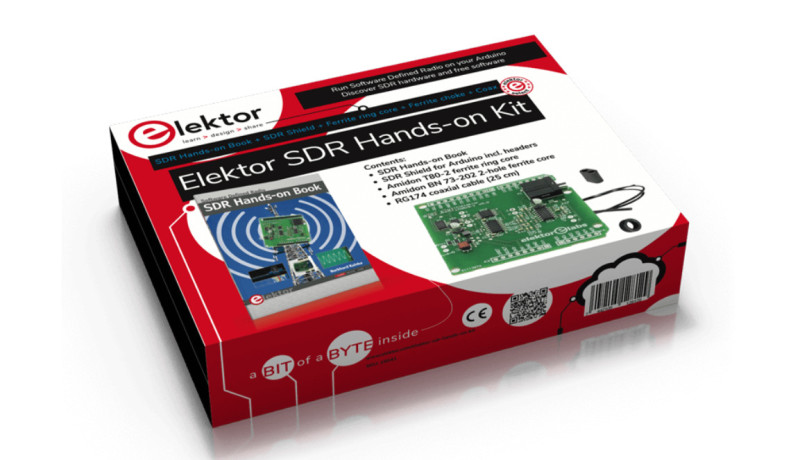Review: Elektor SDR Hands-on Kit
on

Software defined radio (SDR) allows receiving and decoding of radio signals using relatively simple hardware and a computer. The SDR Hands-on Kit from Elektor contains all the necessary parts to make a start with this modern form of radio reception. Here we give an impression of the features of this affordable kit and our initial experience with SDR.
Elektor has already given much attention to SDR over the years. Not just the technology, but also in the form of practical and easy-to-build hardware. Already in 2007 there appeared an SDR receiver in the form of a shield for an Arduino Uno, where the Uno took care of the tuning of the oscillator on the SDR board. The audio-out signal from the circuit board was sent to a PC, which used special SDR software to distil the received audio signals. This way, signals from 150 kHz to 30 MHz could be received.
This popular SDR receiver has since been followed by two successors, the most recent dates from 2016. For a few tenners you can buy a lready assembled board of the Elektor SDR Shield 2.0 and it offers a great opportunity for an introduction to the SDR phenomenon.
Complete kit
For some time now, Elektor has been offering a so-called SDR Hands-on kit, which contains a hands-on book, an assembled SDR shield, a number of headers, two special toroidal cores and a length of thin coaxial cable. The only thing that you have to provide yourself is an Arduino Uno (but most of us will have one of those already).

equivalent of the book pictured here is
called: SDR Hands-on Book.
The book in this kit is the SDR Hands-on Book (available in English and German), written by the developer of the SDR shield, Burkhard Kainka. He explains in a clear way how to make a start with the SDR shield. He also shows how you can use different SDR software programs and pays a great deal of attention to antennas, an essential element for obtaining good reception. Of course, the software for the Arduino is also described in detail. And finally he offers a few bigger projects based on the SDR shield: a stand-alone receiver, a WSPR transmitter and a QRP transceiver.
A review of the book has already been carried out by Elektor RF specialist Jan Buiting. His review is pretty extensive and I encourage you read it. Speaking for myself, I am more familiar with audio and measurement technology and as a non RF specialist I thought it would be interesting what my experience with this kit would be.


Discussion (2 comments)